The echoes of an ancient civilization, Kemet, resonate with enduring wisdom regarding hair and its profound place in human society. For generations, whispers of how hair defined status, identity, and spirit in that sun-drenched land have floated across time, particularly for those of us connected to the deep heritage of textured hair. We find ourselves drawn into this narrative, recognizing not just a distant history, but a reflection of our own ancestral reverence for the strands that crown us.
How did ancient Egyptian hair care truly influence social standing? This question unbraids itself as a living archive, revealing layers of intention and cultural meaning that shaped not merely appearance, but the very fabric of communal life and individual belonging.
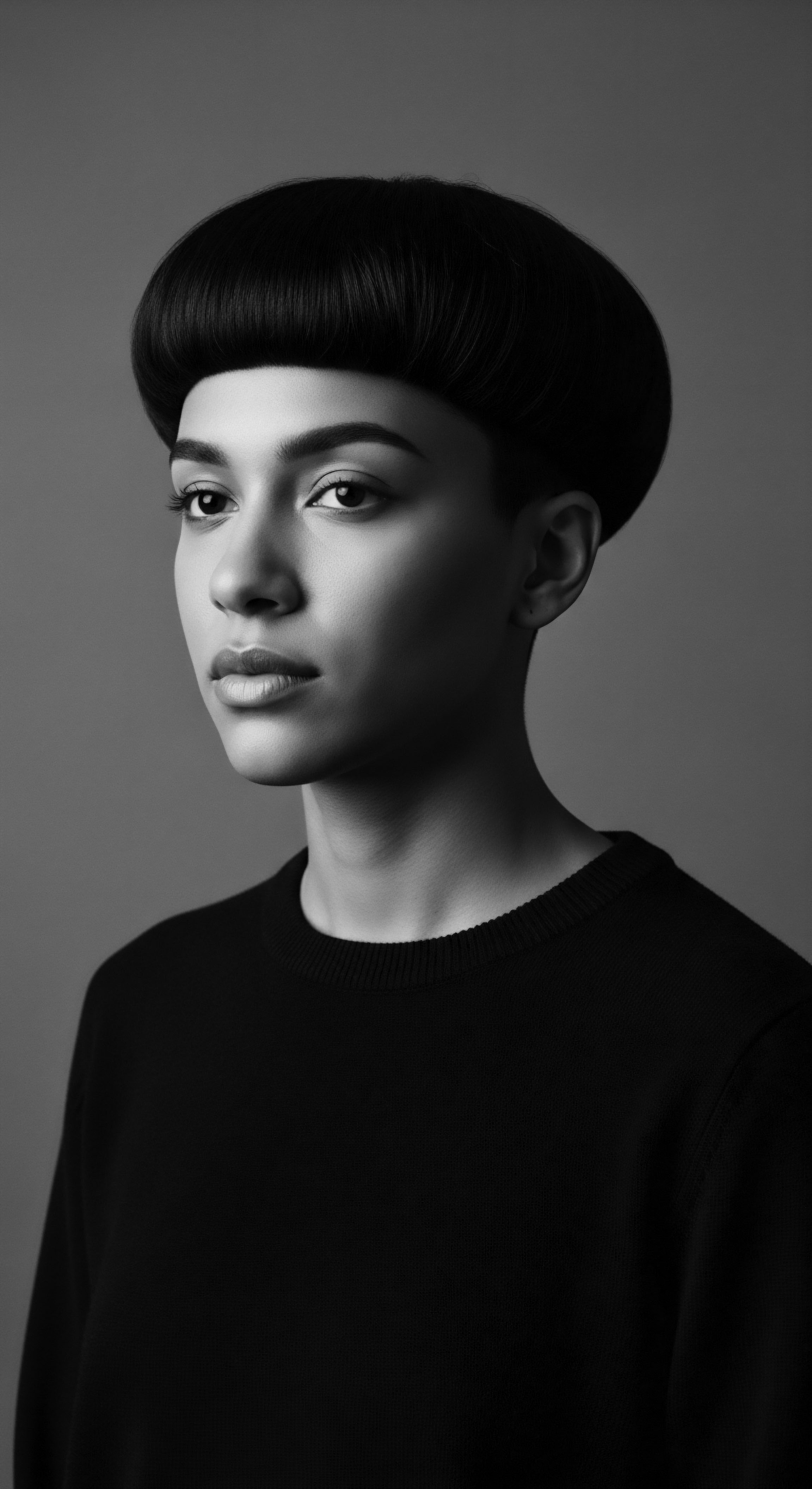
Roots
In the expansive Nile Valley, where life unfolded under the watchful gaze of deities and the radiant sun, hair held a position far beyond mere adornment. It served as a visible testament to a person’s life, their position within the intricate societal layers, and their connection to spiritual realms. The very essence of hair, its growth, its capacity for change, hinted at an inherent vitality that the ancient Kemites understood deeply.
This understanding laid the groundwork for meticulous hair care rituals, a practice rooted in hygiene, aesthetic ideals, and deeply held beliefs about social order. The hair, whether naturally present or meticulously crafted into wigs, became a language of identity.

Hair’s Elemental Being and Ancestral Echoes
From the delicate curl of a new growth to the enduring strength of a matured strand, hair’s journey is a marvel. In ancient Kemet, the varied textures of indigenous hair were understood, accommodated, and even celebrated within the context of their hair practices. While modern science provides us with the tools to dissect the helical structure and protein bonds that define textured hair, the Kemites perceived its qualities through a lens of practicality, beauty, and symbolism.
Hair, for them, was a living fiber, responding to care, environment, and spirit. This ancient wisdom, passed down through generations, recognized hair not as something to be tamed into submission, but as something to be nurtured and honored, a concept that reverberates within contemporary textured hair heritage practices.
The archaeological record offers compelling evidence of the diverse hair textures present within ancient Egyptian populations. Mummified remains reveal a spectrum of hair types, ranging from coarse to kinky, wavy, and even straight. This dispels any narrow interpretations of ancient Egyptian hair, instead presenting a vibrant picture of varied textures, each cared for with precision.
Combs unearthed from sites like Kemet, some dating back over 6000 years, share striking similarities with modern afro combs, featuring long teeth spaced to navigate denser hair patterns. These artifacts speak volumes, suggesting an ancestral lineage of tools designed specifically for the unique qualities of textured hair, a testament to thoughtful, heritage-informed care.
Ancient Kemet’s approach to hair was a harmonious blend of practical care, aesthetic aspiration, and profound spiritual meaning, deeply influencing social standing.
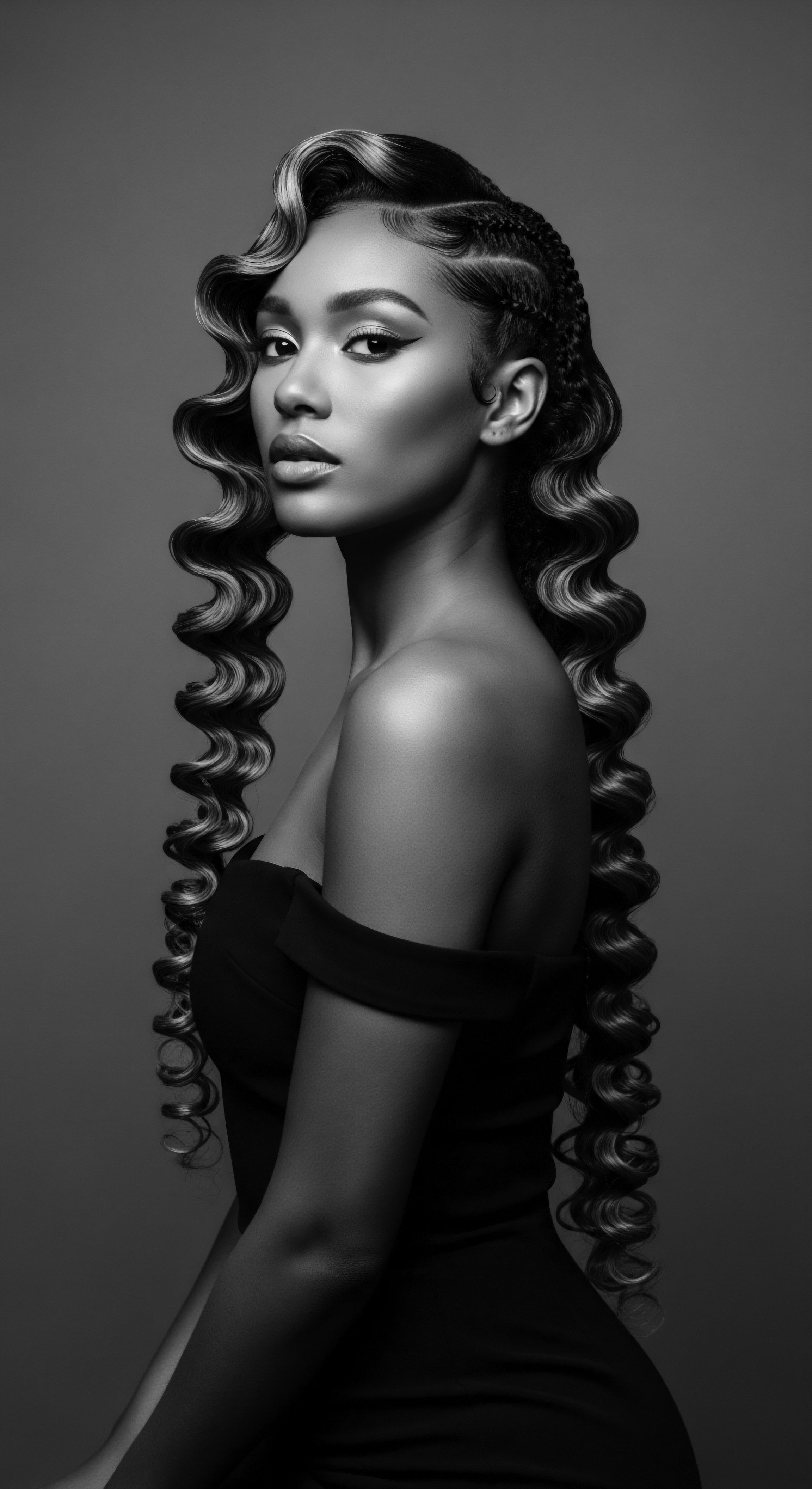
The Visual Language of Social Standing
Hair served as a potent, immediate indicator of a person’s place within the Egyptian social hierarchy. Visual representations in tombs and temples consistently showcase this. For the elite, whether royal figures or high-ranking officials, hair was a canvas for elaborate expression. They wore intricate wigs, often crafted from human hair, sometimes augmented with plant fibers or sheep’s wool.
These wigs were not merely decorative; they were markers of immense wealth and status. The sheer resources required to procure, construct, and maintain such pieces – skilled wigmakers, valuable human hair (listed alongside gold and incense as a commodity), and the leisure time for grooming – positioned their wearers at the pinnacle of society.
Consider the depiction of Pharaoh Akhenaten’s Great Royal Wife, Queen Nefertiti, often shown wearing what scholars identify as a “Nubian wig” on relief fragments. This choice of style, emulating the short, tightly curled hair worn by Nubians (an ancient people residing in what is now Sudan), speaks to the cultural exchange and appreciation for diverse hair expressions even at the highest echelons of power. Such an adoption, rather than signifying assimilation, highlighted a sophisticated engagement with regional aesthetics, further solidifying the ruler’s expansive influence.
In stark contrast, those of lower classes, particularly laborers working under the harsh sun, typically kept their hair short or shaved. This was largely a practical matter, promoting hygiene and ease in the hot climate, guarding against lice infestations, and requiring minimal maintenance. However, the visible difference also served as a constant reminder of social distinctions. The ability to wear and maintain long, styled natural hair or elaborate wigs signaled leisure and the availability of servants, which directly correlated with one’s position in society.
- Human Hair Wigs ❉ Reserved for the elite, signifying immense wealth and leisure.
- Short or Shaved Hair ❉ Common among the working class and priests, indicating practicality and ritual purity.
- Side-Lock of Youth ❉ A specific style for children, signaling their age and innocence, worn by both boys and girls until puberty.
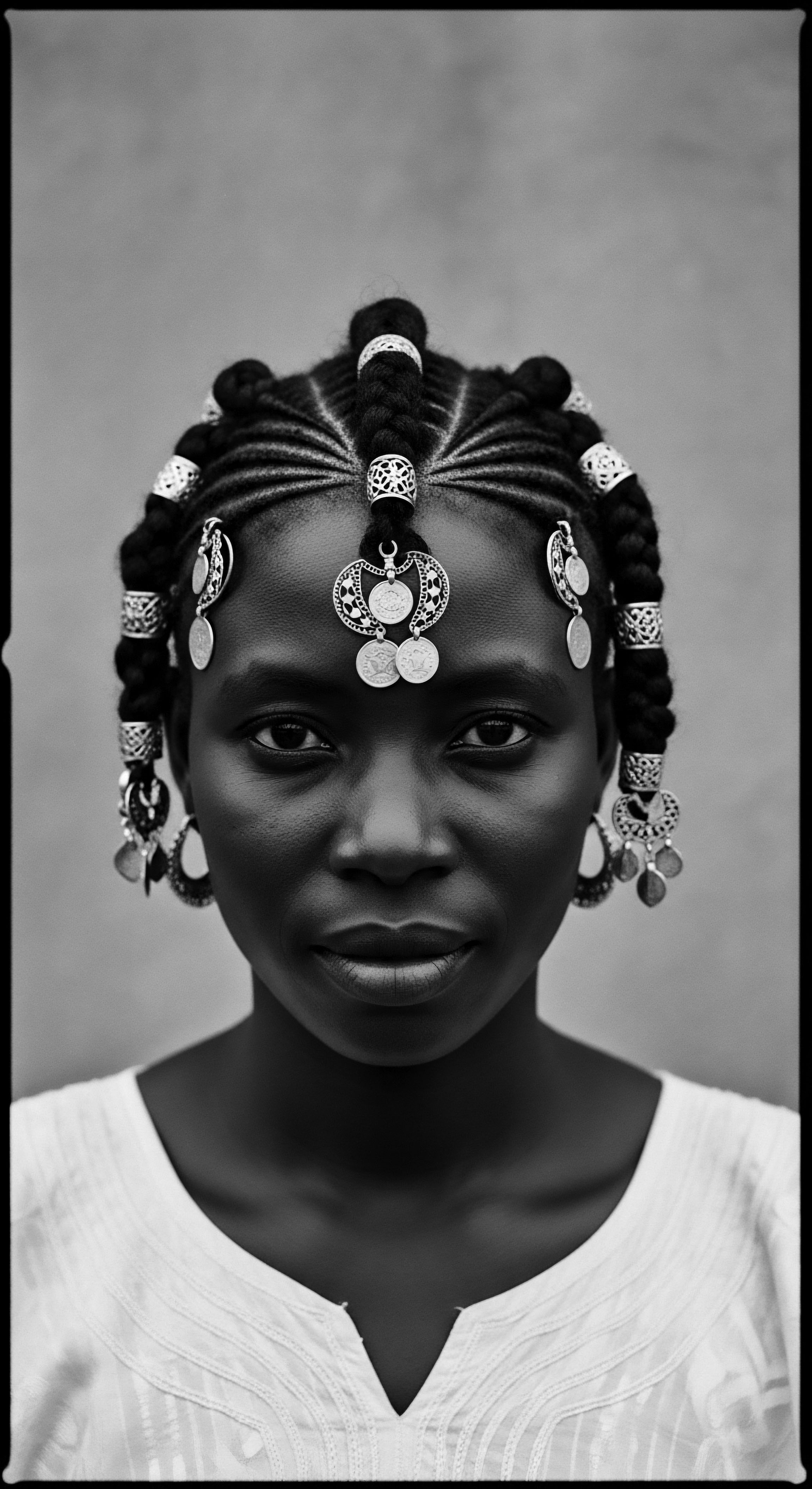
Ritual
Beyond its visual declarations, hair care in ancient Kemet was deeply interwoven with ritual, hygiene, and a reverence for the body as a vessel for spirit. The daily practice of tending to one’s hair transformed into a series of conscious acts, each laden with intent, mirroring a broader societal commitment to order, purity, and aesthetic harmony. These ancestral habits, some of which mirror contemporary wellness practices, transcended mere superficiality, becoming an integral part of how individuals presented themselves to the world and connected with the divine. The deliberate application of oils, the methodical combing, and the careful styling were not simply tasks; they were quiet declarations of self-respect and cultural adherence.

Daily Anointing and Cleansing Practices
Personal cleanliness was highly regarded in ancient Kemet, driven by both practical needs in a warm climate and spiritual imperatives. Hair, susceptible to dust and pests, received considerable attention. Regular washes were common, though the exact frequency remains a subject of study. Material culture offers tangible proof of this dedication to hair hygiene.
Archaeologists have uncovered an array of tools ❉ combs, hairpins, razors, and clips, some crafted from ivory or wood, displaying intricate designs. These implements speak to a sophisticated understanding of hair maintenance, suggesting careful detangling and cleansing practices that would be familiar to modern textured hair communities.
Oils played a central role in Kemetic hair care. Almond, castor, honey, and even animal fats were employed to nourish, moisturize, and promote healthy growth. These natural ingredients were chosen for their perceived benefits, a practice rooted in ancestral knowledge of botanical properties.
The application of these oils was often followed by the shaping and setting of hair, sometimes with beeswax or resin, ensuring styles maintained their form. This tradition of oiling, of creating a protective layer and a lustrous appearance, reflects a deep-seated connection to the earth’s bounty for self-care, a legacy that persists in textured hair traditions across the African diaspora.
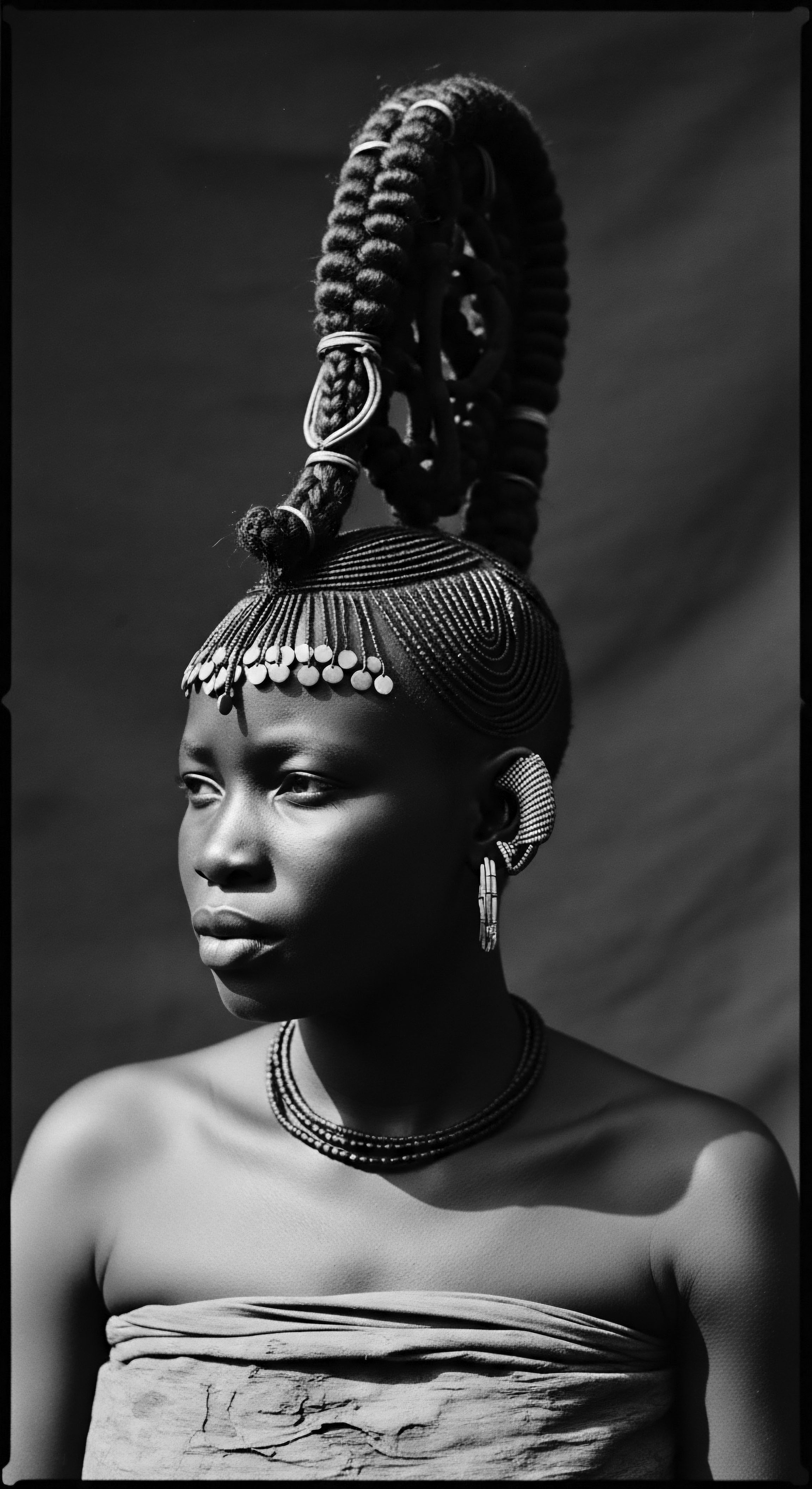
What Role Did Wigs Play in Ritual Purity?
The widespread use of wigs in ancient Kemet often stemmed from practical and ritualistic concerns rather than solely aesthetic ones. Shaving the head, a common practice among both men and women, particularly priests and those engaging in religious duties, served as a means of maintaining hygiene and preventing lice. In the arid climate, long hair could quickly become uncomfortable and difficult to keep clean.
Wigs, therefore, provided a solution. They shielded the shaven scalp from the intense sun while allowing body heat to escape due to their mesh-like foundations.
More than just a solution to practical problems, head shaving, and by extension, wig-wearing, became a symbol of purity and readiness for interaction with the divine. Priests, in particular, were expected to be free from impurities when performing sacred rites, and a shaven head was a direct manifestation of this clean state. The elaborate wigs worn over these shaven heads then allowed the elite to communicate their social standing and religious devotion simultaneously.
For example, a wig discovered in the tomb of Nauny, a priestess from around 1000 BCE, provides tangible evidence of these practices. The finest wigs were made of human hair, meticulously braided into numerous small plaits by skilled wigmakers, a craft that speaks to specialized knowledge and artistry within Kemetic society.
This duality—shaving for purity and wearing wigs for status and protection—highlights the complex interplay of functionality, faith, and social expression in Kemetic hair practices. The act of ritual hair removal, followed by the donning of a crafted hairpiece, underscores a society that understood the body as a sacred vessel requiring specific preparations for different contexts.
Ancient texts and archaeological finds confirm the use of various substances for hair and scalp wellness:
- Almond Oil ❉ Used for nourishing the hair and scalp.
- Castor Oil ❉ Applied to promote healthy hair growth and strength.
- Henna ❉ Employed for dyeing hair, especially to mask graying or to achieve reddish-brown tones.
- Animal Fats/Beeswax ❉ Used for styling and setting wigs or natural hair.
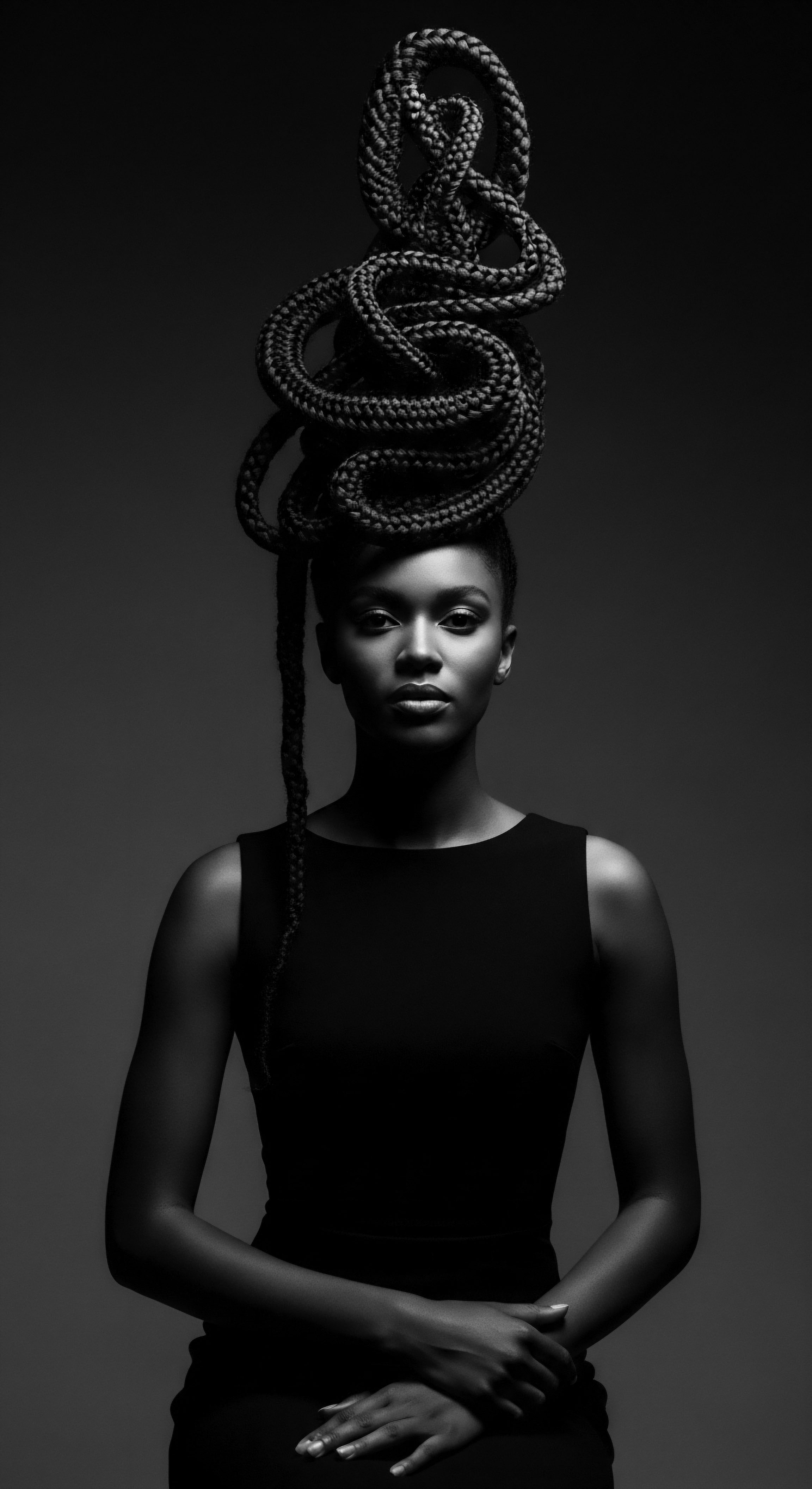
Relay
The reverberations of ancient Kemetic hair care practices extend far beyond their immediate context, shaping a heritage of self-expression and social signaling that continues to inform textured hair cultures globally. The intricate systems of care, the deliberate choices in styling, and the symbolic weight attributed to hair were not isolated phenomena. They represented a sophisticated understanding of identity, community, and power, deeply embedded within the cultural psyche.
This lineage, often traced through the resilience of Black and mixed-race hair traditions, carries forward ancient wisdom, adapting it through centuries of change and challenge. We are speaking here of a legacy, a relay race of knowledge and aesthetics across time and continents.
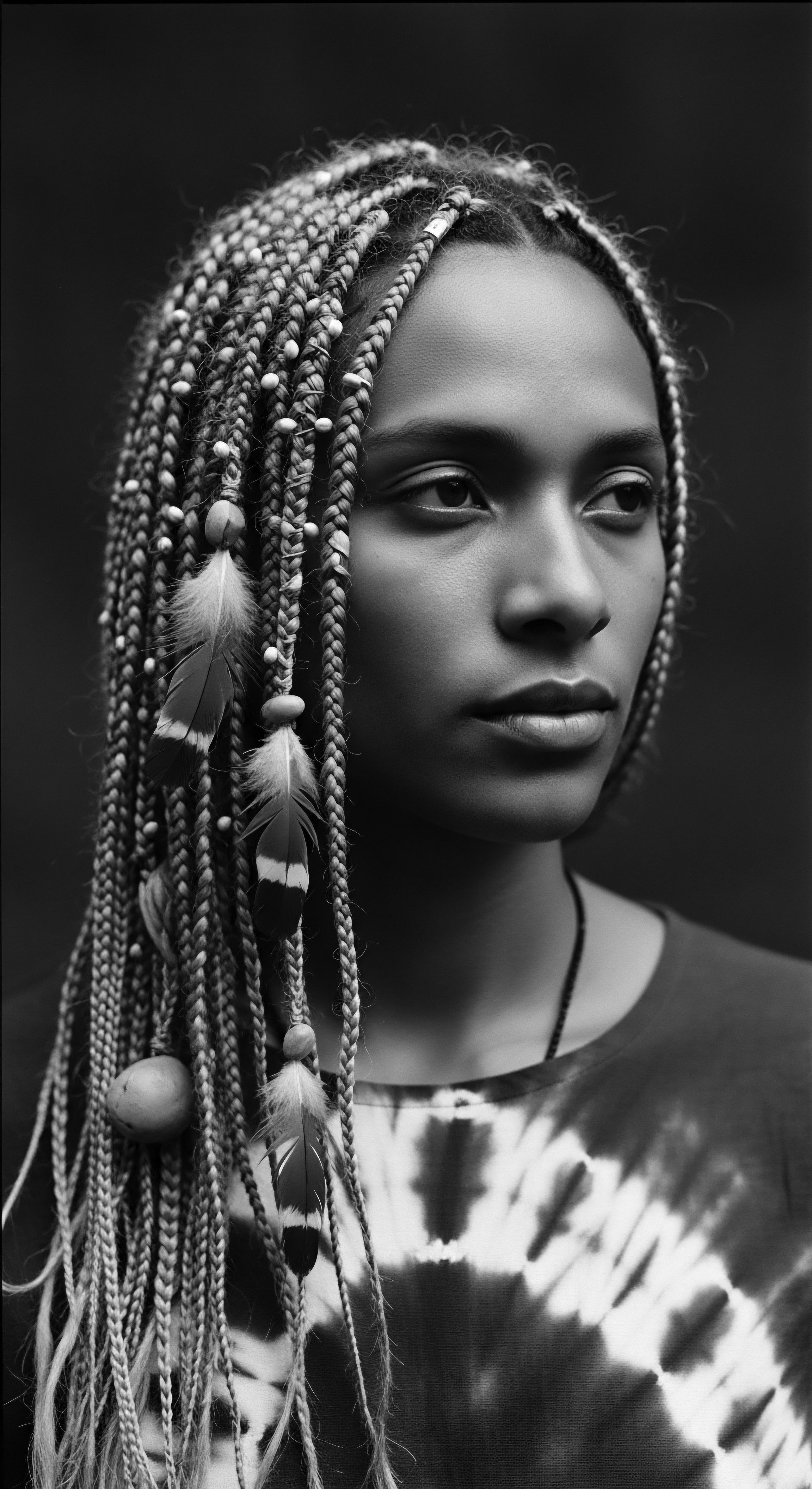
The Enduring Power of Hair as a Social Cipher
Hair in ancient Kemet was a profound social cipher, its style communicating a wealth of information about an individual’s place in society. This was not merely about class; it extended to gender, age, and even specific roles within religious or political spheres. A young person, for example, wore the characteristic “side-lock of youth,” a single plait on one side of a largely shaven head, a visual marker of childhood recognized throughout society and even depicted in hieroglyphs. This specific styling, a rite of passage, illustrates how hair served as a temporal signal, guiding observers through the stages of a person’s life.
The transition away from this style at puberty marked entry into adulthood, accompanied by gender-specific hairstyles that further solidified one’s social standing. (Robins, 2020)
The concept of using hair to signify hierarchy is not unique to ancient Kemet, but their system stands as a particularly rich example. The acquisition of human hair for wigmaking, for instance, involved a deliberate economic exchange, valuing hair as a commodity. Historian Joann Fletcher notes that in Kemet’s barter economy, hair was listed alongside precious items like gold and incense.
This suggests a structured system of collection, likely involving those willing to exchange their hair as part of a transaction, thus emphasizing the power dynamics inherent in the elite’s ability to command such resources for their elaborate wigs. (Fletcher, 1998)
This historical insight—that the literal hair of some might adorn the heads of others to express their dominance—reveals a subtle, yet potent, aspect of social control tied to appearance. It highlights how material culture, even something as personal as hair, can serve as a proxy for power. The very act of wearing a wig made from the strands of another speaks to a capacity to command, to shape one’s image through the labor and resources of the broader community. This historical precedent echoes in the ongoing conversations around hair and power within Black communities globally, where hair continues to be a site of both personal expression and political statement.
| Social Group Elite Men and Women |
| Typical Hair Practice Elaborate wigs of human hair, often plaited or curled, adorned with jewels. |
| Underlying Social Significance Wealth, power, high social status, access to resources and skilled labor. |
| Social Group Priests/Religious Figures |
| Typical Hair Practice Shaven heads, covered with specific wigs for ritual purity and devotion. |
| Underlying Social Significance Cleanliness, spiritual dedication, adherence to sacred rites. |
| Social Group Working Class/Laborers |
| Typical Hair Practice Short or shaven natural hair, for practicality and hygiene. |
| Underlying Social Significance Functionality, modesty, limited leisure time for extensive grooming. |
| Social Group Children |
| Typical Hair Practice Shaven heads with a "sidelock of youth.", |
| Underlying Social Significance Childhood, innocence, distinct developmental stage. |
| Social Group These practices underscore how hair served as a visual shorthand for one's position within Kemetic society. |

Ancestral Practices and Contemporary Resonance
The knowledge of hair care accumulated in ancient Kemet did not simply vanish into the sands of time. Its principles, particularly those related to the care of textured hair, resonate through generations, forming an undeniable part of Black and mixed-race hair heritage. The emphasis on oiling, for example, finds direct parallels in traditional African and diasporic practices, where various plant-based oils like shea, argan, or castor continue to be central to hair health regimens. This continuity speaks to an ancestral wisdom that instinctively understood the needs of textured strands long before modern scientific validation.
Consider the historical persistence of braiding and locs. While the general assumption links dreadlocks to Rastafarianism, their origins can be traced back to ancient Kemet, where pharaohs and warriors wore them as a badge of honor and a symbol of spiritual identity. Sculptures and paintings from Kemet show men wearing tightly coiled twists in neat rows, a style that reflects a broad indigenous African tradition found across the Nile Valley and into West Africa. (Cheikh Anta Diop, 1974) This historical example profoundly illuminates the connection between ancient Kemetic hair practices and the textured hair heritage of Black communities.
The fact that a style as culturally loaded and historically rich as locs has direct roots in ancient Kemet, worn by figures of power and spirituality, offers a powerful counter-narrative to colonial-era disparagements of textured hair. It reminds us that these styles are not new or “unprofessional,” but rather possess an enduring legacy of regality, spiritual depth, and cultural significance.
The deep historical roots of styles like locs in ancient Kemet offer a powerful counter-narrative to prevailing biases against textured hair, affirming a legacy of regal beauty.
The understanding of cleanliness, the protective styling, and the use of natural ingredients for scalp and hair vitality demonstrate a continuity of practice that transcends millennia. From the precise crafting of wigs to the functional design of combs for specific hair textures, the Kemites laid foundations. Today, the choice to wear natural hair, to braid, to loc, or to utilize traditional oils is not merely a stylistic preference; it is an act of reclaiming heritage, honoring ancestral practices, and asserting identity against narratives that historically sought to diminish the beauty of textured hair. The lessons from ancient Kemet are not static historical footnotes; they are living traditions, a soulful thread connecting past to present, informing our understanding of self and community.
Reference to an academic work on hair and status in ancient Egypt:
- (Robins, 2020) Robins, Gay. “Hair, Gender, and Social Status in Ancient Egypt.” JSTOR Daily, 2020. This work examines how tomb chapels in ancient Egypt (c. 1480-1350 BCE) illustrate social stratification through hair depictions, noting differences for men, women, and children based on status and gender.
- (Fletcher, 1998) Fletcher, Joann. “Ancient Egyptian Hair ❉ A Study of Its Production, Function and Social Context.” British Archaeological Reports, 1998. This scholarly publication delves into the economic and social aspects of hair and wig production in ancient Egypt.
- (Cheikh Anta Diop, 1974) Diop, Cheikh Anta. The African Origin of Civilization ❉ Myth or Reality. Lawrence Hill Books, 1974. Diop’s work often discusses the historical and cultural ties between various African peoples, including those along the Nile, and can provide context for the prevalence of certain hairstyles in ancient Kemet.
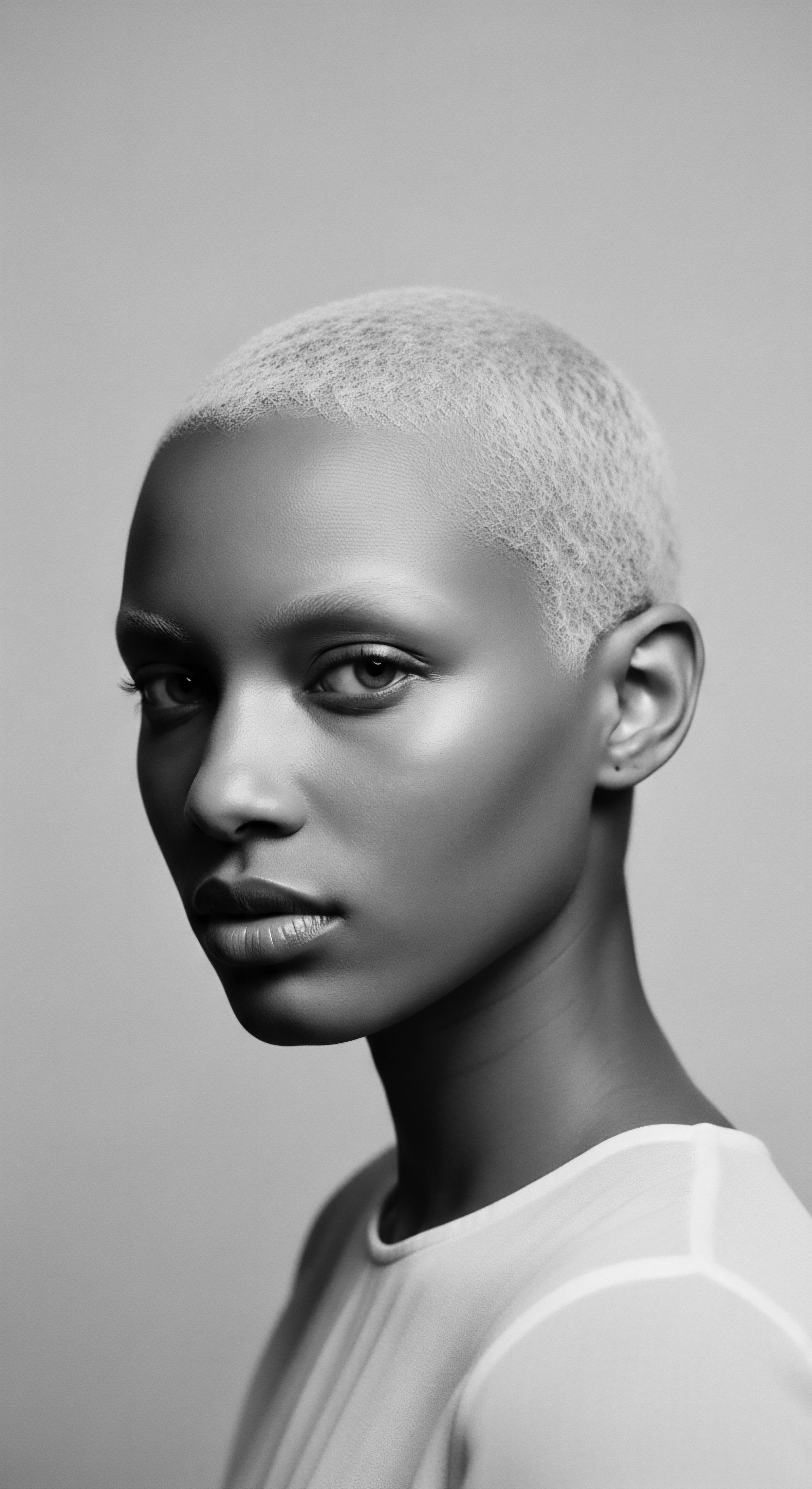
Reflection
As we close the scroll on ancient Kemet’s hair traditions, a profound realization settles ❉ the “Soul of a Strand” is not a modern construct, but a timeless truth. The meticulous care, the symbolic gestures, and the social declarations expressed through hair in that distant land whisper across epochs, finding their echo in our own textured hair heritage. Hair was, and remains, a living archive, each curl, coil, and braid holding stories of resilience, artistry, and identity. The Kemites understood that tending to one’s hair was a conversation with self, community, and cosmos, a practice that affirmed dignity and belonging.
Their practices remind us that the roots of our hair wellness journeys run deep, connecting us to a vast, shared ancestral wisdom. This legacy is a vibrant call to honor the inherent beauty and historical weight of every strand, recognizing its power to narrate our past, enrich our present, and shape an unbound future.

References
- Fletcher, Joann. Ancient Egyptian Hair ❉ A Study of Its Production, Function and Social Context. British Archaeological Reports, 1998.
- Robins, Gay. “Hair, Gender, and Social Status in Ancient Egypt.” JSTOR Daily, 2020.
- Diop, Cheikh Anta. The African Origin of Civilization ❉ Myth or Reality. Lawrence Hill Books, 1974.
